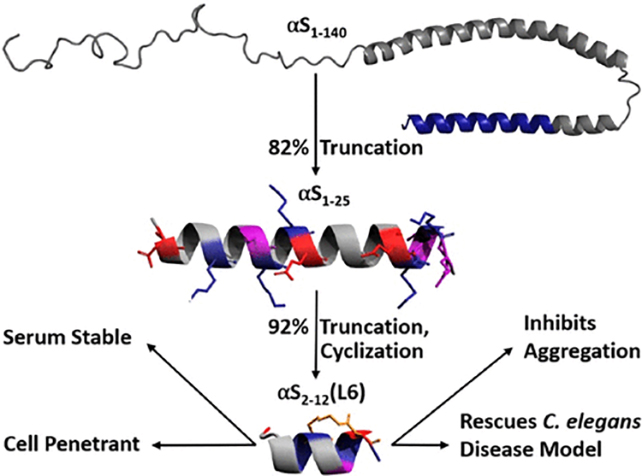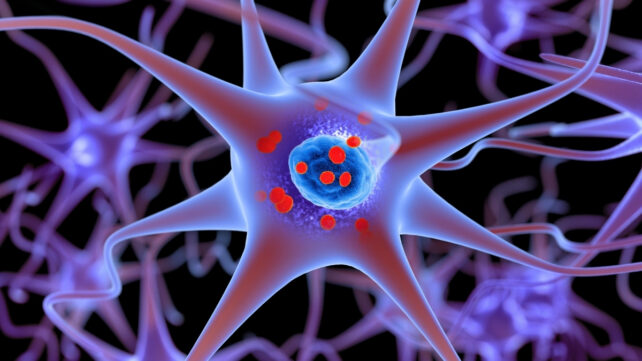As Parkinson's disease progresses, harmful protein clumps build up in the brain, blocking communications between neurons and killing them off – but what if we could prevent these clusters from forming?
Researchers led by a team from the University of Bath in the UK have achieved just that in a basic worm model of Parkinson's. They engineered a peptide, a small amino acid chain, to essentially keep a protein called alpha-synuclein locked in its healthy shape. This prevented the misfolding that leads to clumps.
The potential treatment checks several important boxes: it's durable, and it can survive inside cells without causing any toxic side effects.
Related: Parkinson's Disease Could Be Ignited by Burned-Out Brain Cells
"This opens an exciting path towards new therapies for Parkinson's and related diseases, where treatment options remain extremely limited," says biochemist Jody Mason, from the University of Bath.
The study follows on from previous work by some of the same researchers, which identified part of the alpha-synuclein protein that may stop it building to dangerous levels. This key part or fragment acts like a guide for the protein to follow.

That fragment was then cut down into the smallest possible size to form the new peptide tested here. The researchers also added extra stability to their peptide molecule, using chemical structures called lactam bridges to stop it from breaking down.
Crucially, the peptide created by the researchers can patrol cells and prevent misfolding without interfering with the normal, healthy job that alpha-synuclein is there for: regulating neurotransmitter signaling chemicals such as dopamine.
"Our work shows that it is possible to rationally design small peptides that not only prevent harmful protein aggregation but also function inside living systems," says Mason.
Part of the challenge of finding effective treatments for Parkinson's, and other diseases like it, is that it can be difficult to disentangle the causes of the condition from the consequences – are alpha-synuclein protein clumps appearing because of the effects of Parkinson's, for example, or helping to drive its progression?
With that in mind, the treatment outlined here seems preventative. It could eventually be used to stop proteins from building up in the brains of people at risk of developing Parkinson's, rather than breaking up existing protein clumps.
 There's a lot of progress to be made – including figuring out the best way to deliver these peptides into the body (which will be significantly more difficult for humans than it is with worms) – but the early signs from this research are positive ones.
There's a lot of progress to be made – including figuring out the best way to deliver these peptides into the body (which will be significantly more difficult for humans than it is with worms) – but the early signs from this research are positive ones.
The researchers also want to explore using similar techniques for related conditions, including Lewy body dementia and Alzheimer's disease – which are characterized by dangerous protein clumps of their own.
"To make progress towards a cure for all forms of dementia, we need research focused on developing a broad range of treatments that can slow, stop and ultimately reverse these diseases," says Julia Dudley, the head of research at Alzheimer's Research UK, which helped fund this study.
"Although this is early research in an animal model, it's exciting to see that this new molecule can prevent the build-up of misfolded alpha-synuclein."
The research has been published in the Journal of the American Chemical Society.
